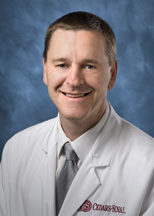|

Please click here to view 2009 Walk to Defeat ALSTM Photos
March 13th, 2010 - Carl Johnson Memorial Ski-A-Thon Highlights
Northern New England Chapter Volunteer Receives WZID Award
May 13-16 & 20-23, 2010
Essex Community Players presents Tuesdays with Morrie
Walk to Defeat ALSTM
Saturday, August 28th, 2010
Hayford Park, Bangor ME
Saturday, September 11th, 2010
Payson Park, Portland ME
Sunday, September 26, 2010
Dorset Park, Burlington VT
Saturday, October 2, 2010
State House Plaza, Concord NH
 Research Updates
Advocacy Updates
ALS in the News
Research Updates
Advocacy Updates
ALS in the News
 Support Groups
Patient & Family Services
Facts About Family Caregivers
Vehicle and Equipment Exchange
Commonly Asked Questions
Poems & Stories
Publications & Videos
Clinics:
Support Groups
Patient & Family Services
Facts About Family Caregivers
Vehicle and Equipment Exchange
Commonly Asked Questions
Poems & Stories
Publications & Videos
Clinics:
→ Dartmouth-Hitchcock
→ University of Vermont
 Workplace Giving
ALS & the Military
Workplace Giving
ALS & the Military

  

Compassion for Clunkers
Donate your used car to help support research to find a cure for ALS and provide much-needed services to patients and their families in Maine, New Hampshire,and Vermont.
Click here to learn more!

_____________________________
|
|

|
|
The ALS Association Presents
Essey Award to Clive Svendsen
|
|

|
|
Dr. Clive Svendsen
|
The ALS Association joins the American Academy of Neurology in presenting The 2010 Sheila Essey Award for ALS Research to Dr. Clive Svendsen, a global leader for stem cell research. Dr. Svendsen has been instrumental in bringing stem cell approaches to the clinic
Dr. Svendsen is currently the Director of the Cedars-Sinai Regenerative Medicine Institute in California. Initially focusing largely on Parkinson’s disease, Dr. Svendsen received funding through The ALS Association to establish stem cell approaches for the treatment of ALS. Several of his published studies describe detailed and elegant work using modified neural stem cells to release powerful trophic factors such as glial-derived neurotrophic factor (GDNF) to surrounding motor neurons. These studies were performed in transgenic rats expressing mutant G93A Superoxide Dismutase 1 (SOD1), a rat model of ALS. These studies revealed that even though motor neurons releasing GDNF could survive and protect dying motor neurons after transplantation, the rats did not show functional improvement. Further studies from his group injecting GDNF releasing cells into the muscles rather than spinal cord did increase function in this ALS model system and highlighted the importance of maintaining appropriate connections at the neuromuscular junction. However, as the cause of sporadic ALS remains a mystery, either approach may have beneficial effects in the disease itself.
|
|
|
|
|